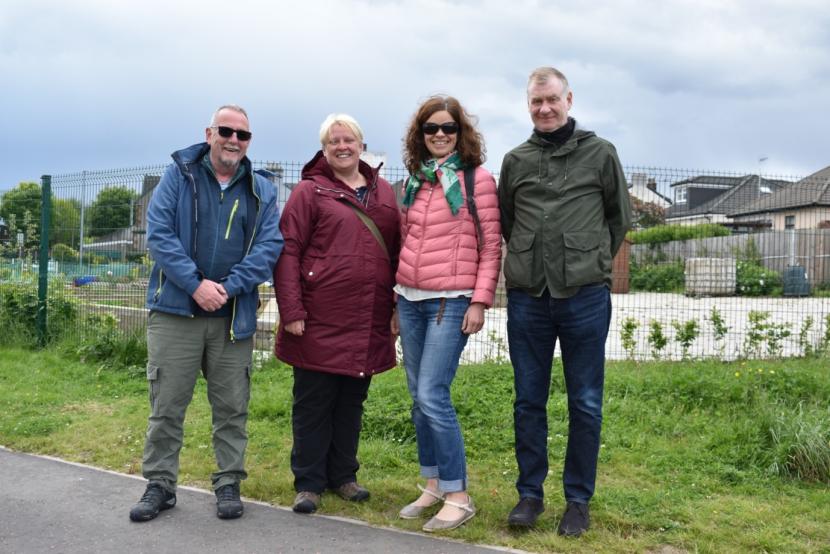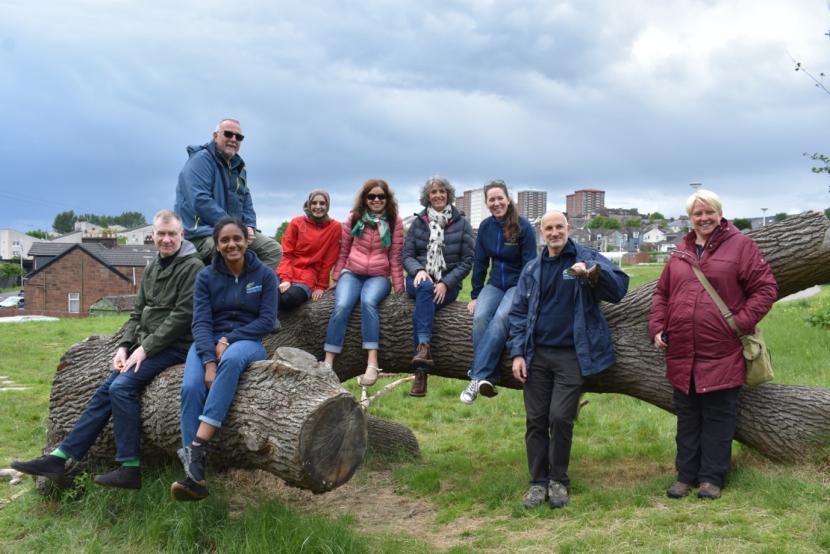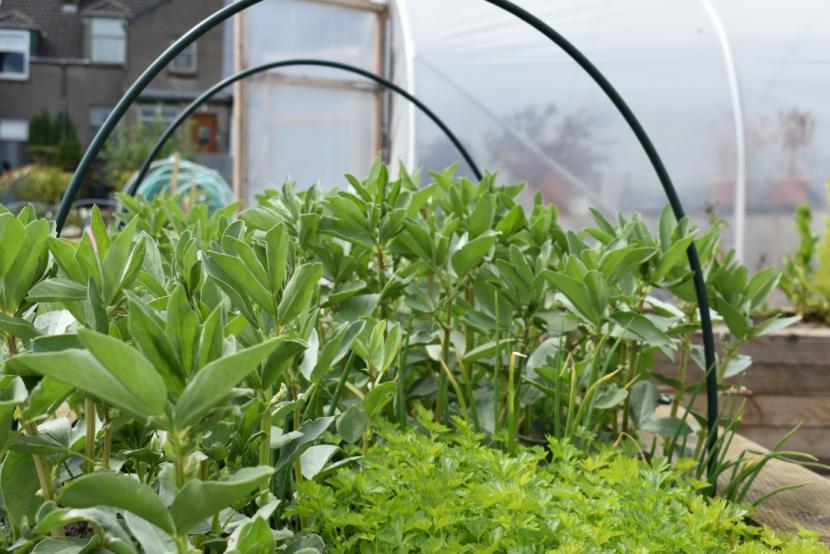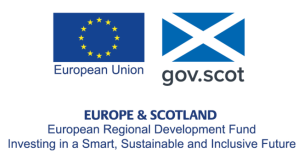
Green Infrastructure Project Update - Seizing the moment
It’s all very well and good to make plans, but sometimes in life you have to be prepared to change direction. That’s certainly been the case at Melfort Park, the site of the former St Eunan’s Primary School. When the old school was demolished the expectation was that new housing would rise from the rubble. However, the revelation that the site was contaminated and unsuitable for development forced a change of plan. And what a positive change it turned out to be.
The reward for adaptability is that Clydebank can celebrate a wonderful new park in the very heart of town. And make no mistake, that word ‘park’ covers a multitude of assets. From community growing spaces, to educational areas. From exercise opportunities to open and attractive active travel routes. This is a park where the sum of the parts adds up to something spectacular.
Magda Swider is Regeneration Officer at West Dunbartonshire Council and knows the challenges, successes and story behind Melfort Park better than most.
“The fact that we the site was contaminated was a game changer. This meant it wasn’t suitable for building development, and it certainly wasn’t going to be feasible to develop it for housing.”
So summer 2016 saw the council committed to keeping ownership of the site, and seeking the views of the local community in what local residents would like to see taking shape. Providing it was financially viable, the council were open to all ideas.

From left to right: Andy, Gillian, Magda and Colin from West Dunbartonshire Council.
And the ideas came pouring in. When pieced together the overwhelming appeal was for a quality park, one which included a community growing space set amidst a pleasant greenspace. There was also a plea that the park incorporated routes to walk between housing and the town centre. A play area for kids, but not a large playpark, as this might have proved too noisy, scored highly too. Another feeling that came through loud and clear was a desire for some green space where people could simply relax, socialise and be closer to nature.
Magda and her team had the task of making those consultation dreams into physical reality. “Following that 2016 consultation,’ she recalls, “we moved on to producing an outline design for the park. By happy coincidence this was around the time that the Green Infrastructure Fund was announced and we thought ‘That sounds like a good opportunity. We should apply’. So we did, and were really lucky to get the ERDF funding – and the project started in earnest in 2018 and completed in September 2021. Even without a global pandemic to contend with, it always takes longer than you think to get things up and running!
“Covid certainly threw a spanner in the works when it came to getting on site and making progress, but at the end of the day what we have ended up with is a great asset for the local community. The feedback I get is that so many people appreciate having this on their doorstep, and after school you see kids playing here on the exercise equipment, in the flat grass area, on their scooters, and parents just relaxing, sitting chatting. It has become a successful social point.”

That sense of community engagement will surely drive the future of Melfort Park. The Council has strived to ensure it meets the needs and aspirations of local residents and community organisations, and soon they will take the reins.
Andy, Community Greenspace Officer, has been delighted with the local involvement. “As lock-down eased last summer we had three open days, and several neighbours and community groups signed up to using the site. Once we have a committee in place here then we as a council can take a step back, and let the local community assume much more control. I’m confident they will do a good job of looking after things.
“The park is part of the local fabric already. It’s fantastic that we have primary school classes down from St Eunan’s using the site, we have the local Quarriers group using the site, and one group that includes several teenagers. I know of NHS staff living nearby who use the park to unwind in and as a stress-buster.”
Stories of this nature are often more persuasive than facts and hard science. The park is a beating heart for the community, and restorative, social and environmental qualities can often go hand in hand. More than ever we need greener and healthier city spaces.
“I’m particularly pleased with the community growing area. We have raised beds, a portacabin, brilliant use of the site by individuals and groups, and this is set to continue. What shape the growing area takes will be determined by local involvement. I sense that the community here appreciate that they are very fortunate to have gone onto a site that was purpose built. We have only had to make some minor adjustments to the original plans, such as moving a raised bed to give better mobility scooter access to the polytunnel.
“Take a look around and you will see fruit trees, onions, strawberries and potatoes, and everybody gets to share these crops. Some of the people are really active, some are constrained by their working patterns, some wanted a small raised bed, and others want something much bigger. It’s all about trying to make it work for everyone. So we will take stock at the end of the growing season of what is working and what needs tweaked.
“For example, the raised bed we gave the school is quite broad, but I have my eyes on the narrower linear bed for them because that would be better suited to the reach of children and you could have several working side-by-side at once. That’s the kind of change that once the committee is in place they can drive forward.”

“What the site has definitely done is foster a sense of community. There is a real sense of people pulling together here.
“Take the issue with getting water on site as an example. When we built the site we only had one tap up in the very far corner. We can’t dig down (given what lies beneath) so burying a water pipe wasn’t an option. Riding to the rescue was a retired plumber, who was part of the community growing group, and he quickly came up with an above the ground solution. Another nice touch was an artist in the community group painting the barrel planters with scenes of bees and vegetables. Little things like the seating area, the inclusion of some folding chairs, the growing of honeysuckle on the fencing which greatly softens the perimeter … all of these touches make a difference, make this an inviting space to spend time in, and create a sense of personality in the site. Nevertheless, we can’t do everything ourselves and sometimes bigger businesses have helped out too, such as Barr International who have been a huge help with our composting needs.”
That sense of realism and pragmatism is ever-present at Melfort Park. As Magda notes “We have always been careful to make sure that what we delivered we can manage to maintain. It’s been with a practical approach that we have viewed the future of this site.”
So Melfort Park has become a social hub and a positive change for this part of Clydebank. It was a vital resource during the pandemic and it will bind the community in the future. It just goes to prove that, from time to time, a change of plans can lead to a very happy outcome.
Notes
The Green Infrastructure Fund is part of the Scottish Government’s current European Regional Development Fund programme, which runs through to 2023. This is one of two ERDF Strategic Interventions led by NatureScot – the other is the Natural & Cultural Heritage Fund.
You can follow the European Structural Funds blog for ESF activities, news and updates. For twitter updates go to @scotgovESIF or use the hashtags #ERDF and #europeanstructuralfunds




